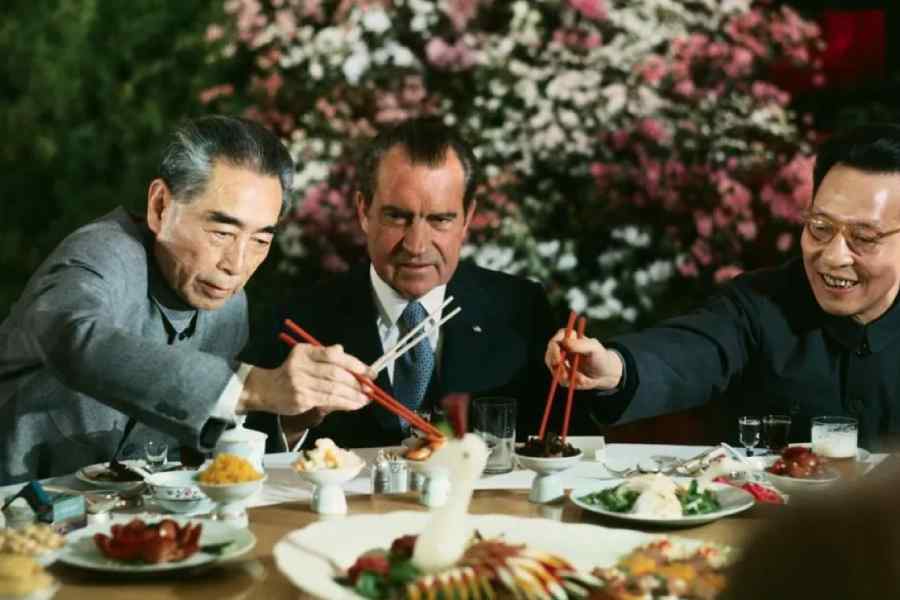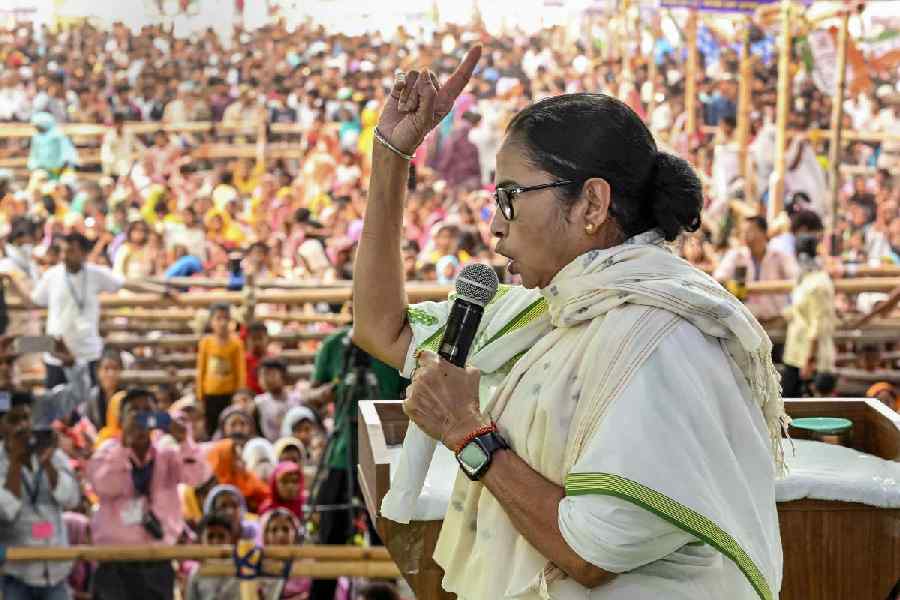‘Rizz’ has been crowned the Word of the Year by the Oxford University Press. There’s certainly quite a bit of rizz — it means charm or style — to the food and the feasting traditions that are unfolding around us as the old year gives way to a new one. The 250 million roast potatoes, 264 million slices of turkey, 218 million portions of cheese, 162 million pieces of Christmas pudding, 366 million glasses of wine, 208 million boxes of chocolates — among other treats — that Britons, research data suggest, wolf down during Christmas confirm both the charm and the style of the festive menu in that country. India doesn’t do too badly either in this Season of Drool. Calcutta, which remains enchanted with the aromas wafting out of Nahoum and other famous bakeries around this time of the year, is an important market for India’s cake industry, which is set to grow at a CAGR of 3.3% and fatten to 94.70 billion USD by 2028. But it isn’t just let them have cake season in India. Regional Christmas delicacies — stew and palappam in Kerala, Manipur’s piscine wonder called nga atoiba thongba, Goa’s bebinca, gongura mutton in Andhra Pradesh, Mangalorean nibbly pastries that go by the cool name, kul kul, or Maharashtra’s tender duck, to name a few dishes — point to the diversity and the pluralism integral to the rizzy indigenous flavours of the Indian Christmas.
The food that is served on the table, be it during Yuletide or at other times, is a matter of importance. Especially when the table is of a certain height: the menu on the diplomatic high table has been known to make or break the lives of nations, great and small. In an interesting article in Foreign Policy adapted from his book, Gastronativism: Food, Identity, Politics, Fabio Parasecoli, a scholarly explorer of the intersections of food, politics and identity, argued that the Churchillian strategy of ‘tabletop diplomacy’ — a White House Christmas dinner in 1941 between Winston Churchill and F.D. Roosevelt included roast turkey with chestnut stuffing, deerfoot sausage and oysters accompanied by grapefruit salad, cheese crescents, plum pudding and ice-cream cake — has merely morphed into, what The Economist christened in 2002, gastrodiplomacy. Several nations, Parasecoli writes, have donned the chef’s hat to hardsell their strategies and economies. Battling a serious economic downturn in 2013, Spain decided to win the world’s hearts and purse strings by riding piggyback on the charm — the rizz — of the jamón (air-dried ham). Madrid was emulating a recipe that had been perfected by Thailand even earlier: embarrassed by Bangkok’s hypnotic pull on the global sex tourist, Thailand discovered, in 2002, that the way to the world’s moral heart lay through the stomach. As part of its dishy diplomacy, Thailand raised the number of Thai eateries around the world, made it easier to import Thai food, and even provided soft loans to restaurateurs. Since then, Parasecoli writes, several other nations, including Greece, Peru and South Korea, have transformed themselves into skilled gastrodiplomats: the kimchi is thus a worthy ancestor of K-pop in Seoul’s search for the global soul.
Indeed, history has shown that dining, on occasion, can complement peace. In 1790, Virginia ham, boeuf à la mode and baked alaska helped Alexander Hamilton, James Madison and Thomas Jefferson — the founding fathers of the United States of America — set aside personal and ideological differences and settle the Revolutionary War debt; similarly, at the Vienna Congress in 1814, it took 300 hams, 200 partridges, 600 ox tongues, 3,000 litres of soup and assorted wines for two emperors and empresses, four kings, one queen, four heirs to thrones, two grand duchesses and countless princes and princesses to bring peace to Europe. Relatively recent examples of food symbolising what the 19th-century British prime minister, Viscount Palmerston, called the “soul of diplomacy” would include Barack Obama serving David Cameron bison wellington with a distinctly American touch to signify the “great marriage” between their nations; the mango mousse encased in hardened chocolate embellished with a map of a unified Korea that Kim Dae-jung of South Korea and Kim Jong-un, his northern brother, had to smash holding a hammer together at the Korean Peace Summit of 2018 would also count among the dishes that served as, metaphorically speaking, pipes of peace.
But hiccups have occurred even at the most-carefully laid out diplomatic table. Some say America’s ties with Japan were left with a sour aftertaste when George H.W. Bush vomited on the Japanese prime minister in 1992; there are whispers that Donald Trump also threw up — a tantrum — upon discovering that goat meat had replaced his beloved beef at a banquet during his visit to India in 2020; Kazakhstan’s tradition of serving the head of sheep to an honoured guest has had its share of heartburn among visiting dignitaries.
But these are perhaps some of the benign examples of the plate upsetting the powers that be. What’s Cooking in the Kremlin: From Rasputin to Putin, How Russia Built an Empire with a Knife and Fork, Witold Szablowski’s engaging, if opinionated, take on Russia’s weaponisation of food in the course of its expansionism offers a more sinister repository of feasts and famines playing a central role in Soviet Statecraft. Szablowski citing Stalin’s ‘deployment’ of caviar and Crimean champagne to gain territorial concessions at the Yalta Conference does speak of a fine Russian touch — Vladimir Putin’s paternal grandfather was, incidentally, a chef who served both Lenin and Stalin — when it comes to winning the statesman’s heart through the tummy.
However, Christmas and New Year are not merely occasions for feasting. These dates on the Gregorian calendar also demand reflection. Could the tables overladen with food, those of diplomats or ours, serve as a mnemonic crutch for the conscience? As we dip into our turkeys, pies, puddings — Europe alone wastes 88 million tonnes of such delicacies each year — will we remember that a recent report by the United Nations found that more than one out of every four Gazans is starving this Christmas? Or that India, apparently inches away from a seat at the high table, still feeds 800 million citizens whose lives and health depend on State largesse?
Unlikely.
Food and feasting have served, more often than not, as tools of erasure for the diplomatic conscience — if there is one. Why else is history replete with numerous instances of injustice and chicanery being perpetrated at the great dining tables of the world?
uddalak.mukherjee@abp.in










